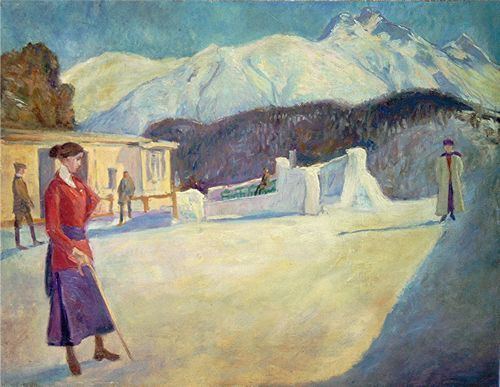Phone +41 81 830 02 00 | ||
 | ||
Similar Cresta Run, Corviglia, Lake St Moritz, Alps, Bahnmuseum Albula | ||
The St. Moritz-Celerina Olympic Bobrun (known officially as the Olympia Bobrun St. Moritz-Celerina) is a bobsleigh track located in St. Moritz, Switzerland. Constructed in 1903, it officially opened on New Year's Day 1904 and is the oldest bobsleigh track in the world and the only one that is naturally refrigerated. It is also used for other sliding sports, including skeleton and luge.
Contents
History
The track was initially created for winter guests from Great Britain who created bobsleigh. In 1897, the St. Moritz Bobsleigh Club was created. Because of popularity of the sport, fund raising for a track begin which was completed in 1903 with CHF 11,000 raised. The track served as host to the bobsleigh events for both the 1928 and the 1948 Winter Olympics. Track modifications have been made several times since the 1948 games, especially on the lower part of the track to meet the demands for higher speeds of the sleds and the increased braking issues after the end of the run. The Horse shoe curve, constructed of natural stones, was strengthened and its height and radius increased during the winter of 1995 and 1996 with a second and final modification taking place in 1995. This was also important with the addition of tour guides to the track that began in 1973 in terms of the wear and tear on the ice. In 1972, the Dracula Start House (Starthaus Dracula in (German)) was demolished and a new structure was created to meet the needs of the bobsleigh organizers with further renovations done in 1992, 1993, and 2002. The last additional modification took place in 2002 with the addition of a runoff after the Portago curve that lead to the Frizzoni's Finish lodge.
Current track turns and length
The track, with 14 named curves, is 1,722 meters long with an elevation difference of 130 meters and an average grade of 8.14%. The curves were given most of their names by the British, which remain to this day.
Track construction
The track construction begins around the middle of November and takes a crew of fifteen ice workers from the Tyrol region of Austria and Italy a total of three weeks to construct the track using 5000 m3 of snow and 4000 m3 of water. Construction follows the entire length of the track from start to finish. Because it is a natural track, length and elevation changes occur annually during construction. Once construction is complete, the fifteen workers split up into respective sections to maintain their area during the season which is done every afternoon and can take up to four hours. Once the bobsleigh and skeleton season concludes in late February or early March, track dismantling begins and continues until the middle of June.
Track records
Because this is a natural track that is constructed and changed on an annual basis, there are no start records and track records.
Championships hosted
The track has hosted FIBT World Championships a record 22 times:
